US equities still in the driver’s seat
US equities have staged a strong revival this month bouncing back to within 1% of their late July highs (as at 23 November). A more benign macro outlook has been the primary catalyst for the bounce-back with recent evidence that the resilient US economy is cooling gradually.
At the same time, recent US inflation data has added weight to the view inflationary pressures are receding. The rally has been helped by a sharp drop in bond yields as the market increasingly views the Fed hiking cycle as over and turns its attention to potential for policy easing in 2024.
Figure 1: The US market has staged a strong revival this month. Australia is still lagging

Figure 2: US economic activity data has cooled in November after a run of upside surprise
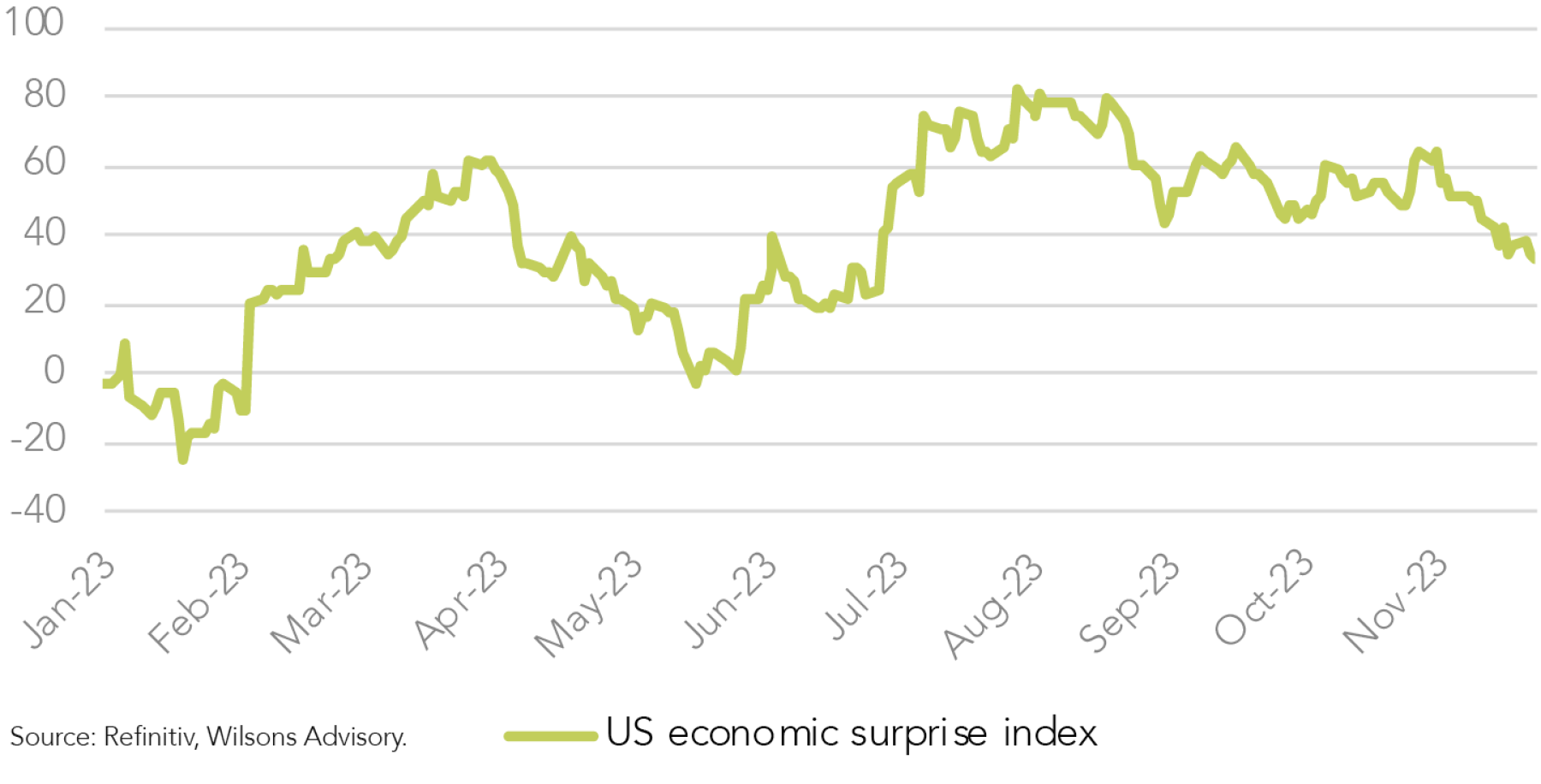
Figure 3: The easing in US bond yields on softer growth and inflation data has buoyed equities once again
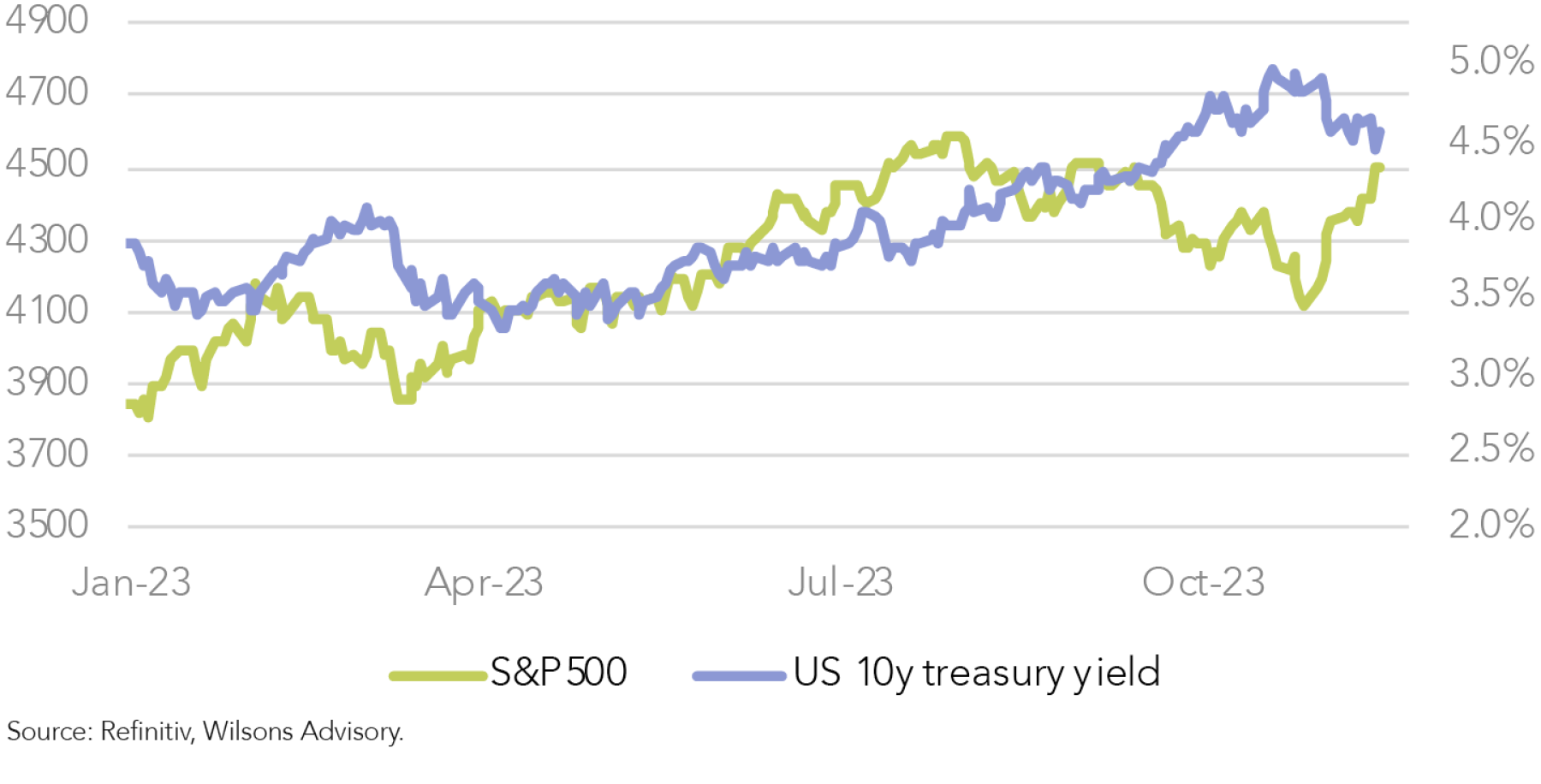
The heavy tech tilt to the US market has once again helped the US revival.Being bond sensitive, US tech led the global equity correction and has also led the bounce. However it is noteworthy that a number of other sectors have staged encouraging bounces as confidence in the macro outlook builds, most prominently financials, industrials and REITs.
Figure 4: The US bounce has been tech led but still fairly broad
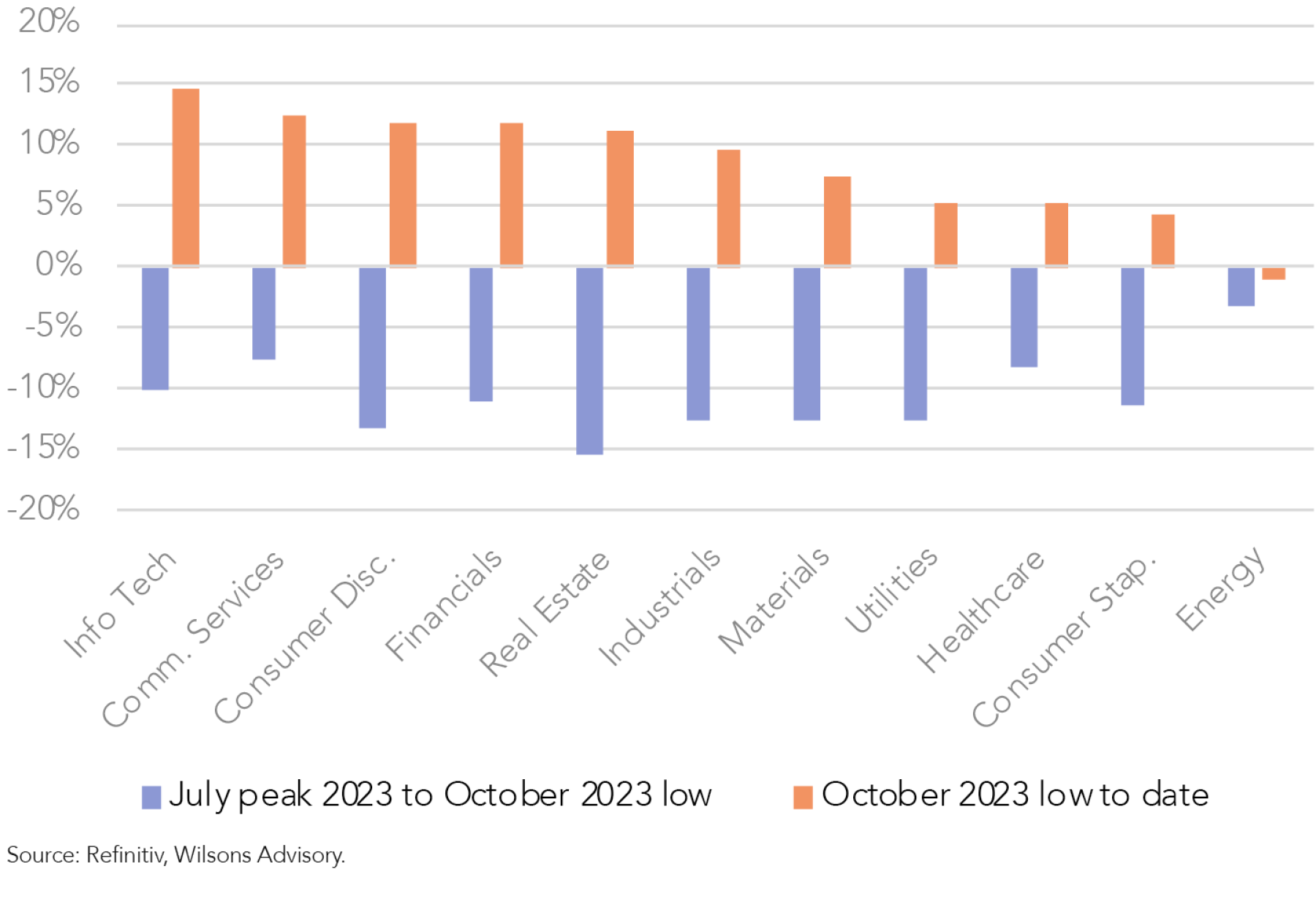
Figure 5: Australia's sector mix has dragged but many sectors have had tepid bounces
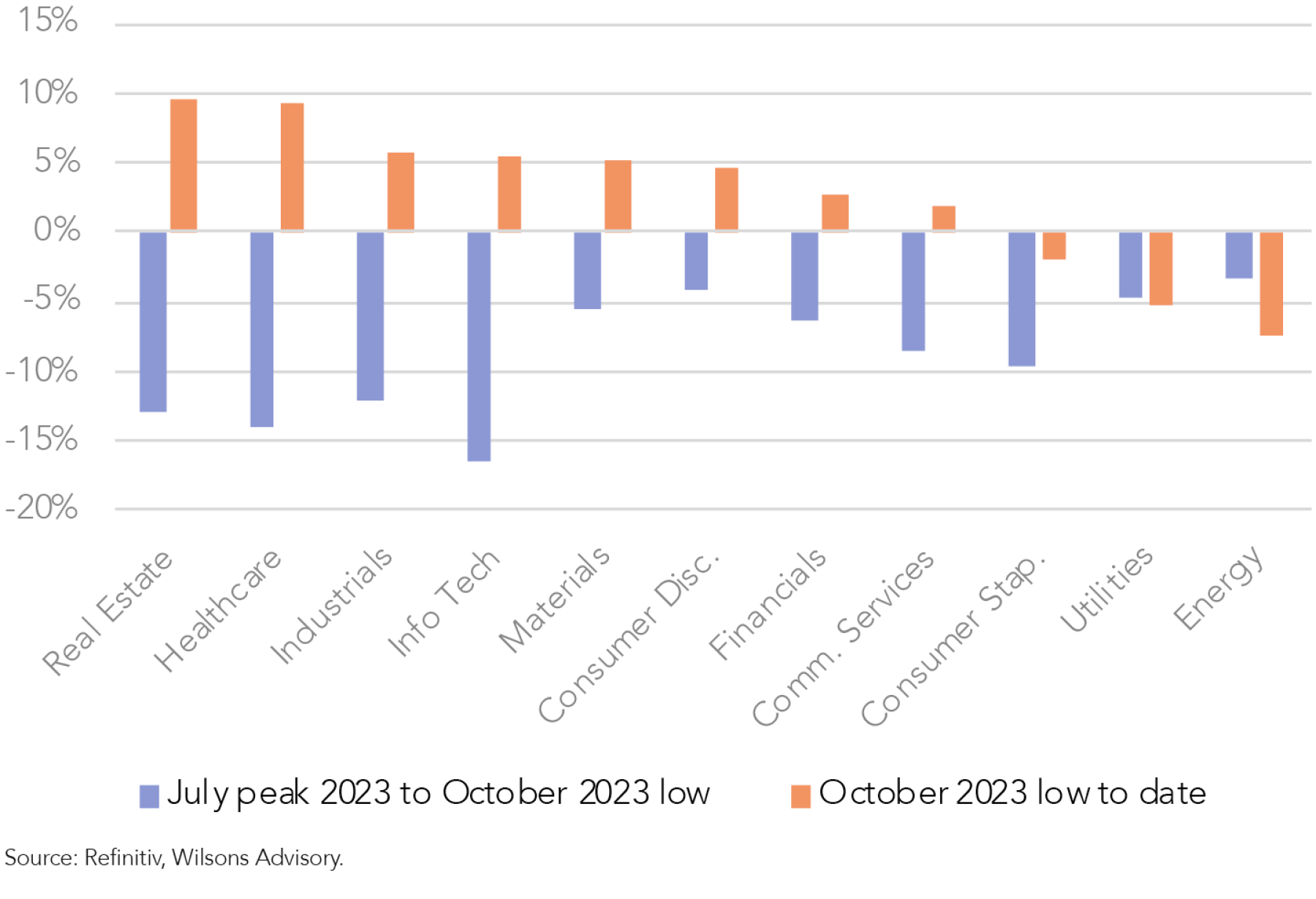
Australia lifts but remains sluggish
After correcting almost as much as the US market, Australian equities have also lifted, but in a less convincing fashion. Our own tech sector is, of course, much smaller, but has also bounced by less. Our large financial sector (banking dominated) has had a less convincing revival than that seen in the US, weighed down by concerns over the ability of the banks to grow earnings in a “higher for longer” rate environment.
The resources sector has had a choppy but reasonably unspectacular year with the big iron ore miners buoyed by a surprisingly resilient iron ore price, while many of the energy transition-focused commodity stocks have been weighed down recently by weakening commodity prices.
US rally should extend over coming months
Prospects for a US-led equity rally into year-end and through the early months of 2024 still look good in our view. Upside pressure should come from more evidence supporting a soft-landing scenario, combined with light institutional positioning and supportive seasonal patterns.
Figure 6: The US is now in a period of typical, seasonal strength
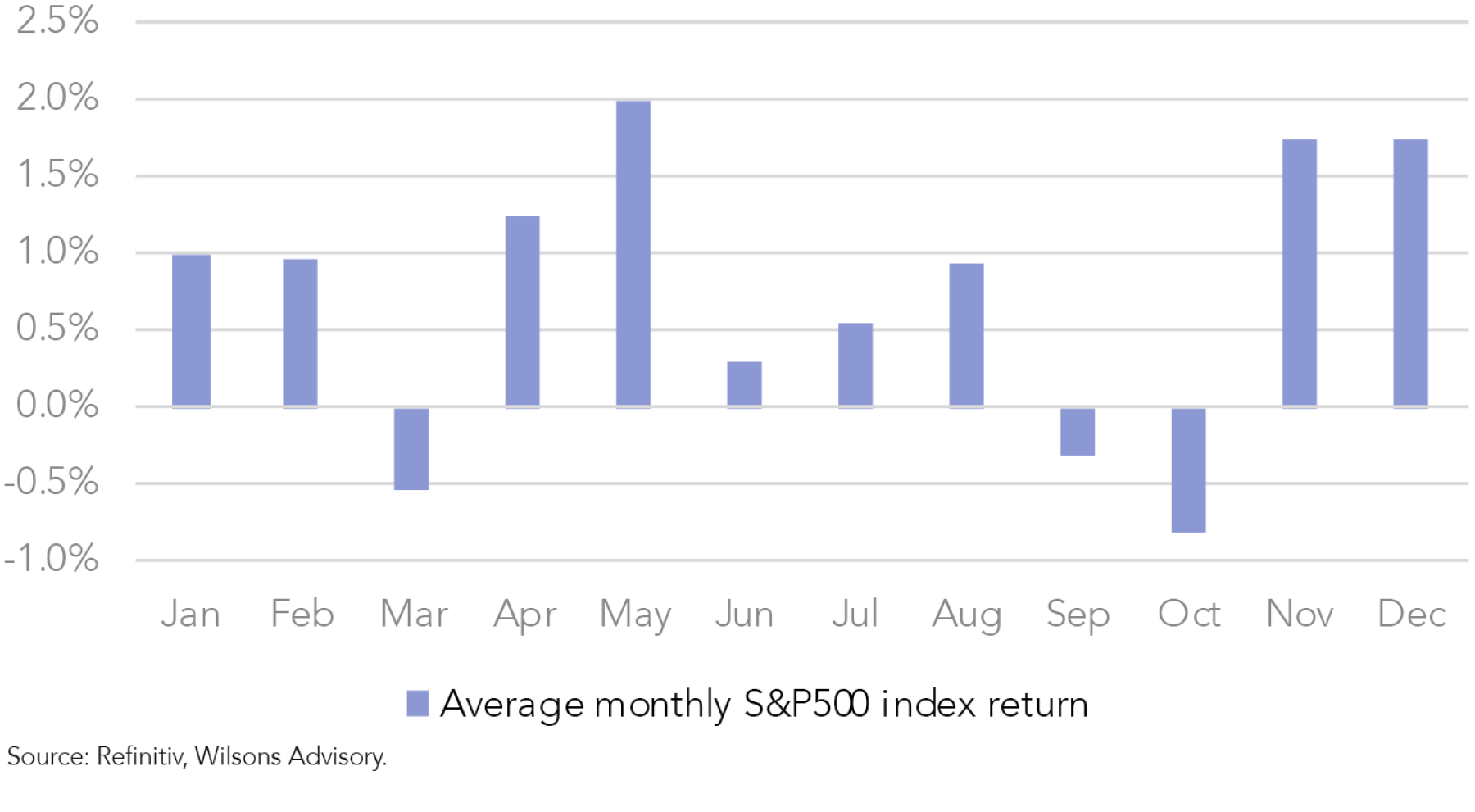
Figure 7: As is Australia
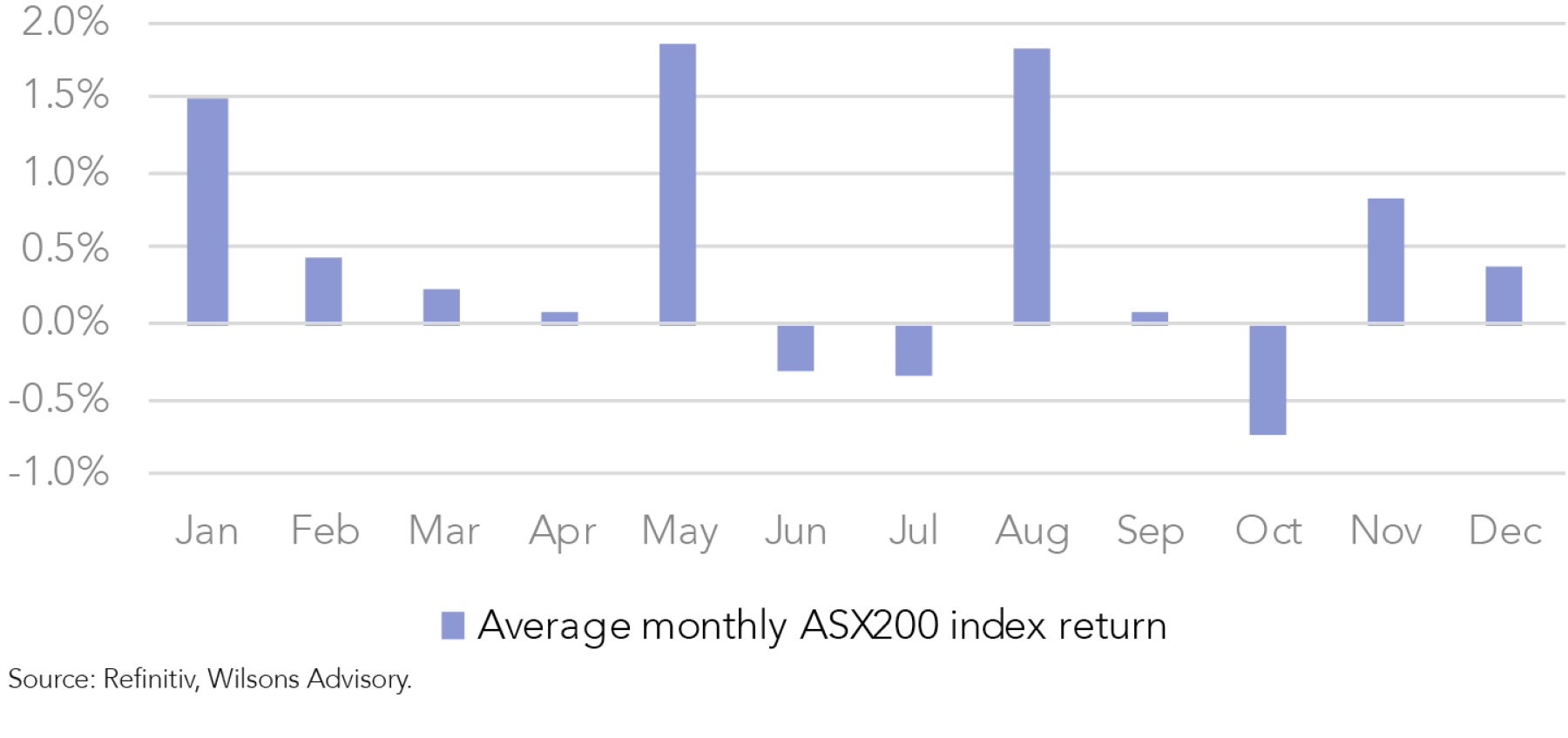
Key signposts for the US over coming months will be the employment and inflation data across December and January. Monthly data is inherently volatile. We expect more evidence of cooling, though still decent economic activity and easing inflation over the next few months.
A larger than expected slowdown in the US economy looms as arguably the greatest risk for 2024. We don’t see this as an imminent threat over the next few months due to the quite gradual cooling in economic activity currently playing out. On the inflation front, the US CPI has shown the capacity to bounce around the declining trend, however, we have reasonably high confidence that inflation will continue to ease on a 3 to 6-month view.
Mega Cap US tech is the main story but not the whole story
There has been considerable commentary around the narrowness of the 18% gain in the S&P 500 this year. This is true to the extent that all of the “magnificent seven” tech megacaps are top decile performers in 2023.
However, we note that 130 companies in the S&P 500 have outperformed the index this year, while 183 are up by at least double digits. So, there is decent performance outside of the “magnificent seven” despite their outsized contribution to the cap-weighted index return.
While the US market is not pricing a recession, it seems investors are still expecting a significant slowdown in economic activity in 2024. Against this economic backdrop, the “defensive”, “structural” growth expected from mega cap tech continues to hold appeal for investors. We believe the odds are still tilted towards a US soft landing, however, the risk of recession appears higher in 2024 than in 2023. We are watching the labour market and consumer stress for cracks in the soft landing scenario.
Figure 8: US performance has been led by the mega-cap tech seven but is not as narrow as is often claimed
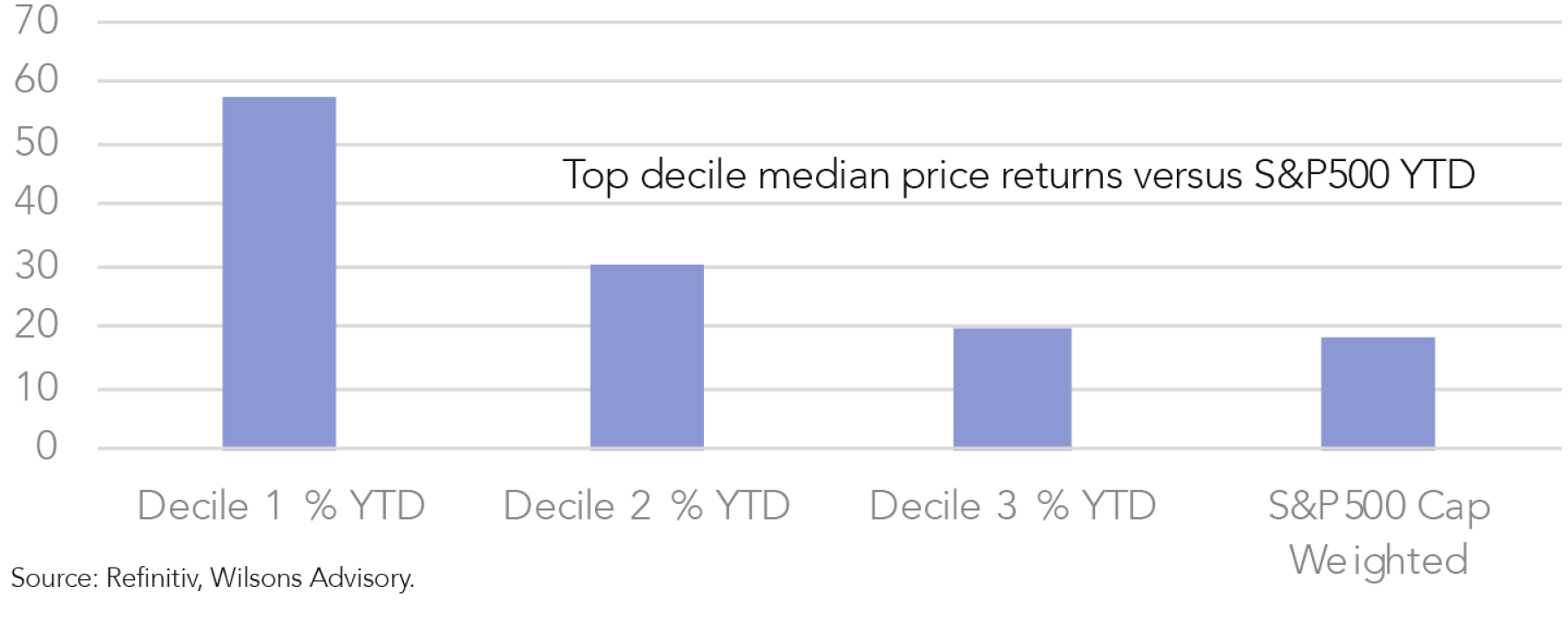
Australia still in the back seat for now
Australian equities will likely continue to lag in coming months though the Australian dollar looks to have turned the corner as US rate cut expectations run well ahead of Australia’s “higher for longer” expectation for the local cash rate in 2024. For Australia, the December quarter 2023 inflation print due at the end of January looms large as to whether the RBA is forced to hike again.
Our base case is they will hold the rate steady as inflation eases a little. We will then move into the February reporting season which is likely to be once again mixed. Mining could deliver a positive surprise in 2024 as China's stimulus continues to accumulate, though a bigger-than-expected global slowdown remains a risk. Healthcare (defensive growth) should have a better year post-recent panic selling, although the heavyweight bank sector will likely be hamstrung by a lack of growth in 2024.
Figure 9: The big 3 Tech heavy US sectors have shone in 2023 while most Australian sectors have been lacklustre
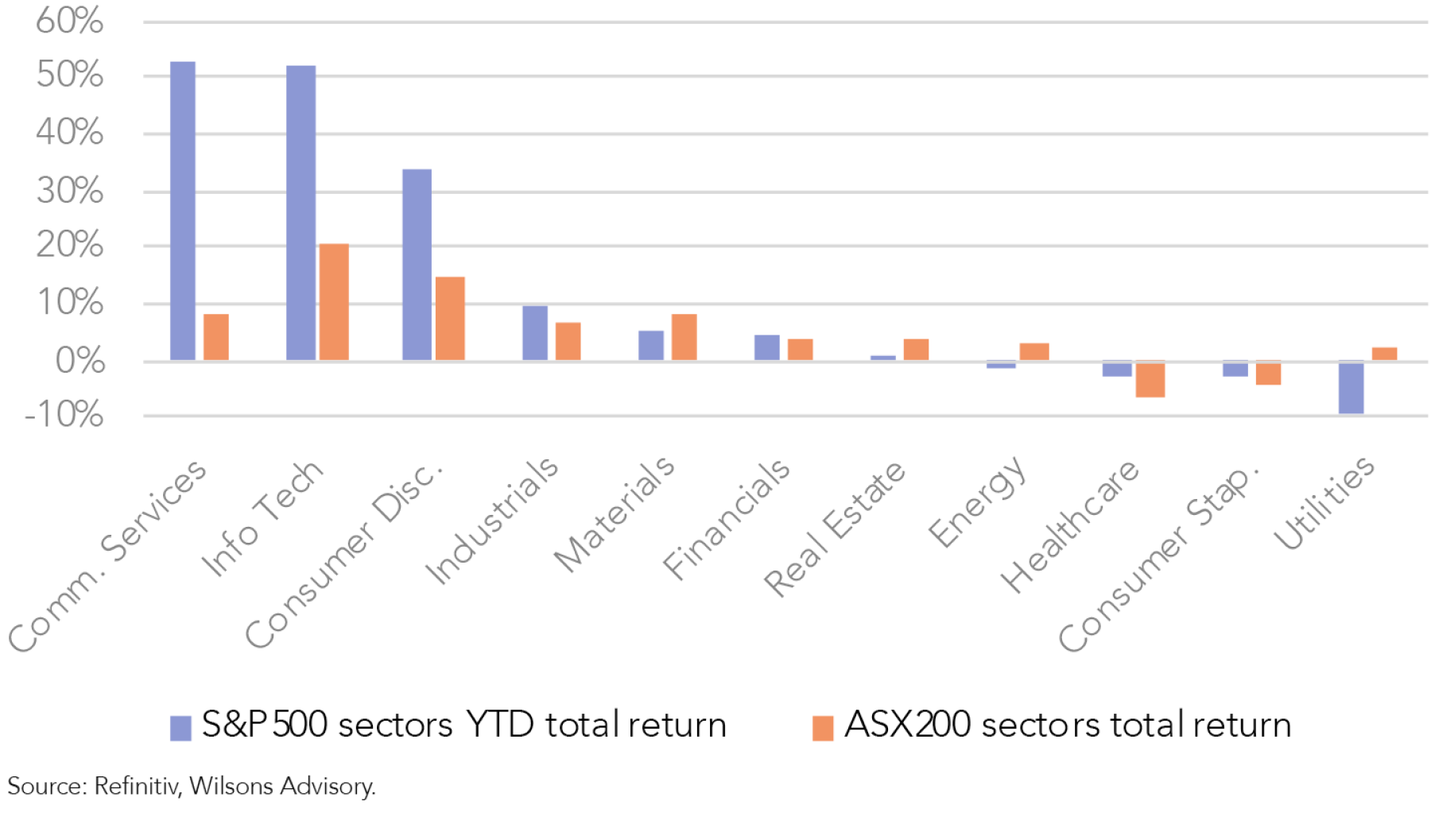
Overall, the Australian market looks to still be relying on an extension in the US rally to lift the index over the next few months.
If the local market can become confident that the RBA is done hiking and begin to price rate cuts later in 2024, local index performance should improve. This scenario should buoy the banks, domestic cyclicals and the small-cap index. However, that may be a story for the second half of 2024.
Learn more
Wilsons Advisory think differently and delves deeper to uncover a broad range of interesting investment opportunities for their clients. To read more of our latest research, visit our Research and Insights.

